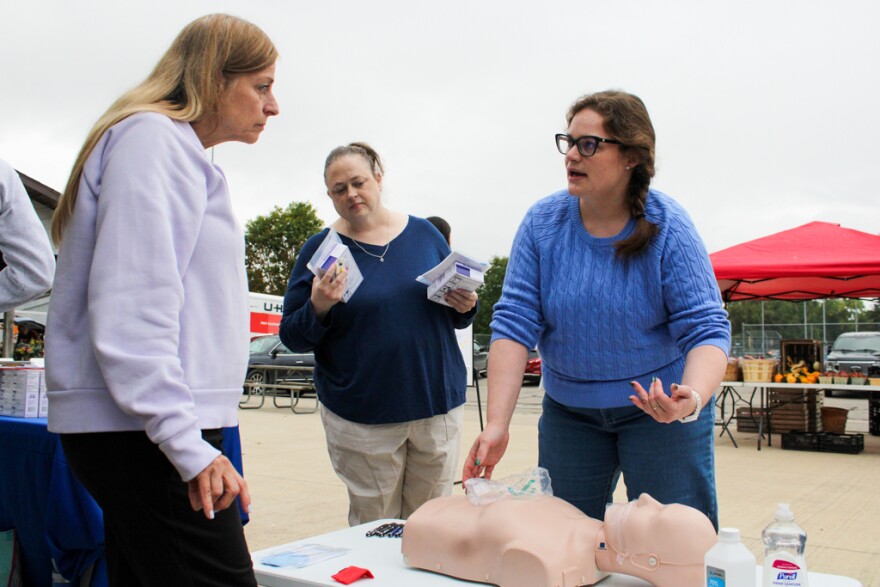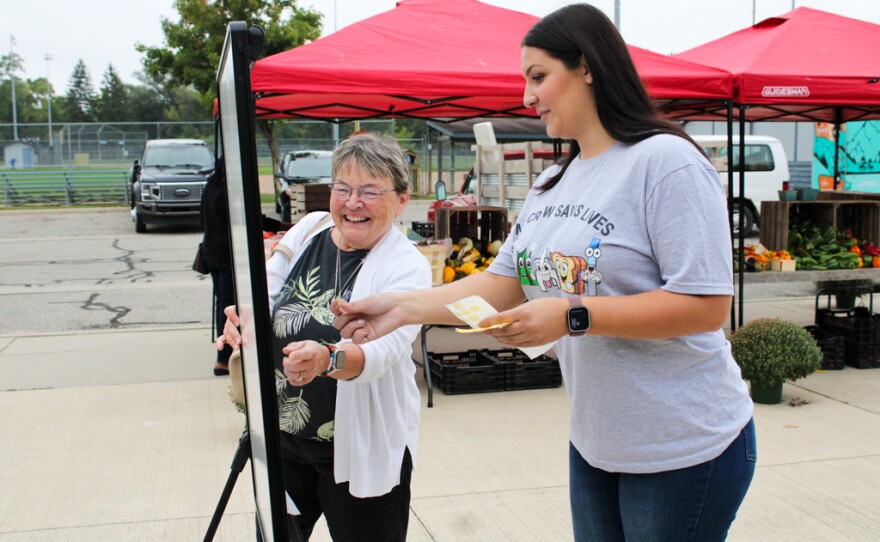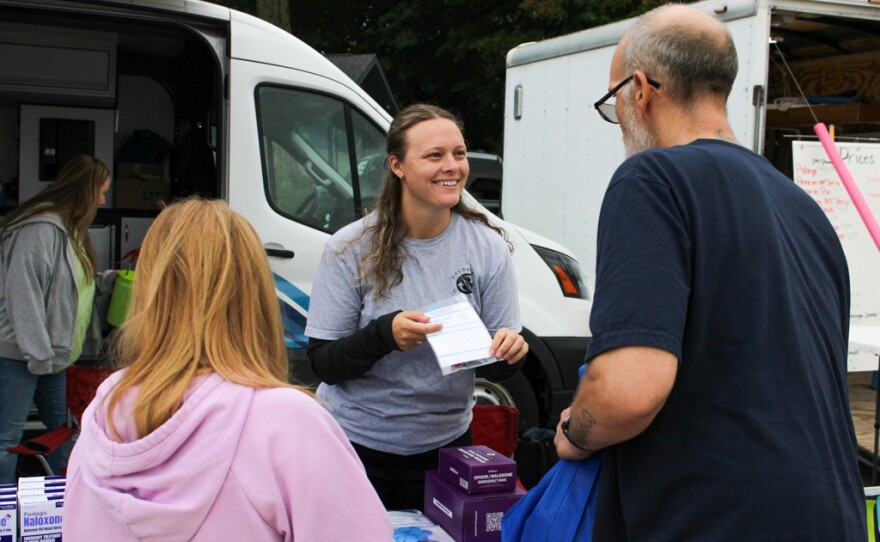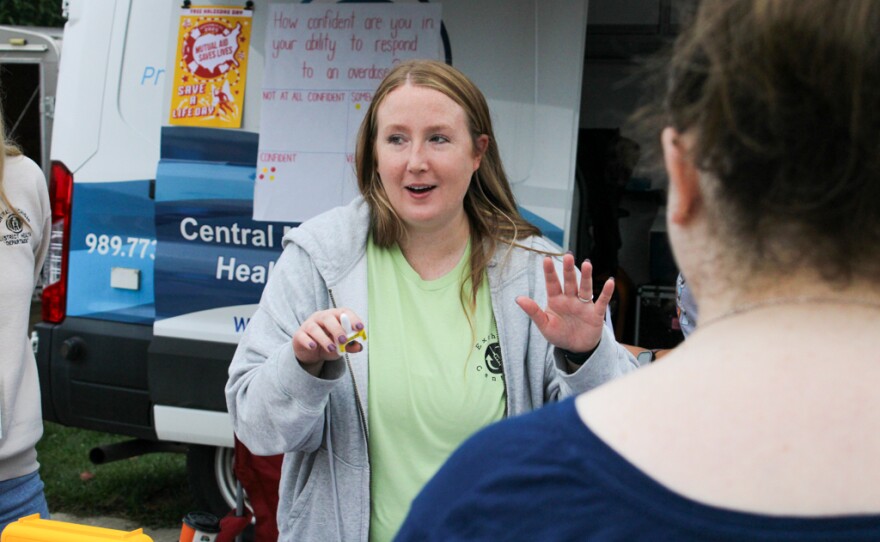The Central Michigan District Health Department (CMDHD) hosted a opioid overdose awareness table at the Mount Pleasant farmers' market on Thursday.
The staff educated the community on how to administer naloxone, how to spot the symptoms of an opioid overdose and how to perform CPR. Naloxone is a life-saving medication that works by reversing the overdose and restores normal breathing.
"The goal for Save A Life Day is to hand out as much naloxone as possible and just educate people on how to respond to an overdose," said Anna Reetz with the CMDHD. "And to break down the stigma around substance use and harm reduction."
There was 1,877 overdose deaths in Michigan in 2024, which is 1,054 less than 2023. The number of overdose deaths were the highest from 2020 to 2024 in the year of 2021, when 3,096 died from overdose.
"So, we want to have people prepared with naloxone so that if they know someone that's using substances or they happen to upon someone that's experiencing an overdose, they can help." Reetz said.
The signs of overdose are someone turning blue, unresponsiveness, raspy breathing and if you suspect they were using drugs.
At their table they described the process of administering naloxone:
- If you find someone unresponsive with the signs of overdose, call 911 immediately.
- Try to wake the person up with a sternum rub.
- Asking, "are you okay?"
- Administer one dose of naloxone through one nostril.
- Wait a minute or two, and do chest compressions and rescue breaths.
- Check if they are responsive.
- If they are not, administer the second dose of naloxone through the second nostril.
- If the person becomes responsive, they may be disoriented so just be there for them and tell them that EMS is on the way.
- If they are not getting up right away, put them in rescue position just in case they need to throw up.
- If the person is still unresponsive, keep doing chest compressions and rescue breaths until EMS arrive on the scene.
"You know, every life is worth saving," Reetz said. "Harm reduction like this, like administering or handing out naloxone in the community and giving education on, you know, substance use and reversals of overdose, this saves lives."
She urges people to support their local harm reduction programs and to break down the stigma around substance use.









